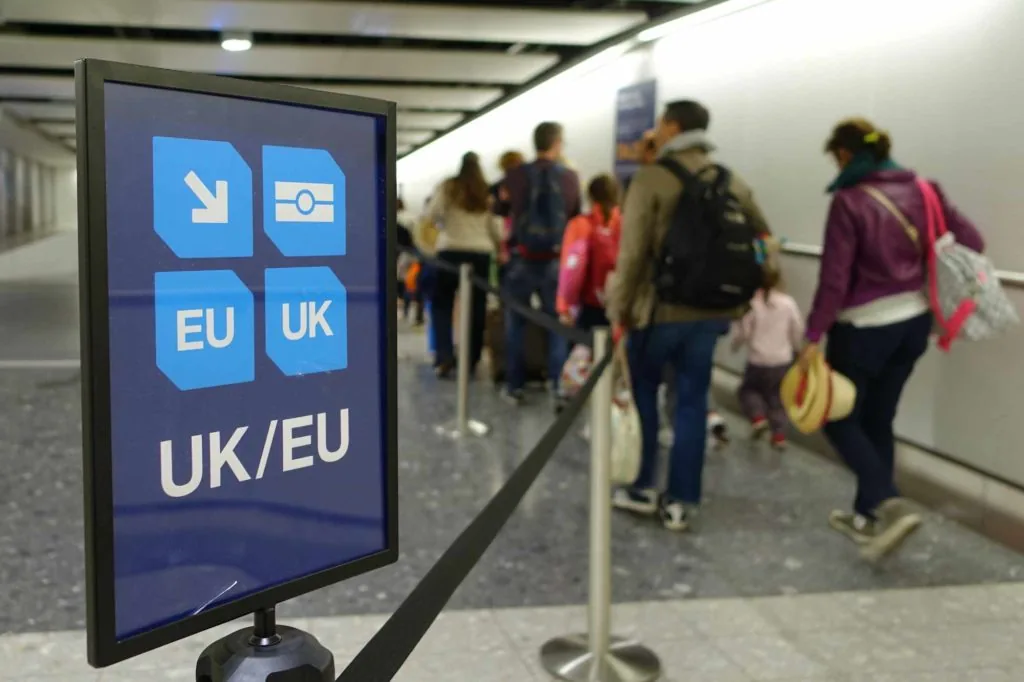
The latest changes to the Right to Work guidance for employers

By Gemma Robinson, Lauren Donnison
4 Mar 2024 | 4 minute read
The government has published updated guidance for employers on right to work checks. This article provides a summary of key changes for employers to remain compliant.
The new guidance applies to right to work checks conducted on or after 13 February 2024. As previously, failure to comply with the guidance may prevent employers from establishing or retaining a statutory excuse from having to pay the increased civil penalty fines for employing a person without a right to do the work in question.
Key updates in the guidance relate to:
- The increases to the maximum civil penalty fines.
- Right to work checks involving EEA citizens and their non-EEA family members, and supplementary employment.
Further details are provided below.
Increases to the maximum civil penalty fines
The guidance contains references to the financial increases that apply for employers issued with a penalty notice on or after 13 February 2024. As noted in our previous business immigration update, the maximum civil penalty fines for employers who employ illegal workers has increased to £45,000 per illegal worker for a first breach and £60,000 per illegal worker for repeat breaches.
Right to work checks involving EEA citizens and their non-EEA family members
Various changes have been made in relation to right to work checks involving EEA citizens and their non-EEA family members, including those who are identified without lawful immigration status. Key points for employers to note include:
- Employers are still required to conduct a right to work checks in respect of individuals who hold EU Settlement Scheme ("EUSS") pre-settled immigration status despite the automatic extensions that have been applied since September 2023. This follow-up check should be conducted within the last month of their original period of leave to ensure the automatic extension to settled status is reflected in their status and the result of this check retained for their records.
- Employers are no longer required to verify an individuals Digital Certificate of Application with the ECS.
- Where an employer identifies an existing employee who did not make an application to the EUSS, they are now required to take "appropriate action", which may include contacting the Home Office for support or taking steps to terminate employment. We would recommend that specific legal advice is sought if employers find themselves in this situation.
- This is a notable variation from the previous guidance which provided a 5-step procedure for employers to follow in this scenario, beginning with advising the individual that they must make an application to the EUSS within 28 calendar days before taking steps to terminate their employment in line with right to work legislation. This 5-step procedure has been removed from the guidance.
- The guidance now confirms that if an EEA citizen or non-EEA family member applies for a job but has not applied to the EUSS and has no alternative immigration status in the UK, they will not be able to pass an employer's right to work check.
- The wording in respect of non-EEA family members who were resident in the UK before 11pm GMT on 31 December 2020 has changed to note that they are required to make an application to the EUSS to continue living in the UK after 30 June 2021. Employers will be able to check their Home Office immigration status via the online service using the share code and the individual's date of birth.
- The updated guidance notes that eligible family members of persons of Northern Ireland who were resident in the UK by 31 December 2020 can apply for an EUSS family permit to join or visit their family member in the UK. These are valid for six months.
- Family members who wish to stay beyond this period should apply to the EUSS within three months of arriving in the UK. Once a valid application to the EUSS is made, they will be provided with a CoA which employers can use to conduct a right to work check.
Supplementary employment
Annex B of the guidance, which relates to the employment of specific categories of workers, has been updated to provide further information for employers offering supplementary employment to individuals who have immigration permission on a sponsored work route.
Key points for employers to note include:
- The updated guidance provides a helpful list of the work visa routes, in addition to skilled workers, that enable a worker to be permitted to take supplementary employment, provided the further conditions are met.
- The guidance clarifies that any overtime with the original sponsor and in the same employment as on the individual's Certificate of Sponsorship must comply with the Working Time Regulations. As per the previous guidance, such overtime does not count towards supplementary employment.
Additional suggestions for employers on how to check that supplementary employment is applicable to a migrant. In addition, to ensuring that the right to work check confirms that supplementary employment applies to the individual, employers should also:
- Ask the individual if they are doing any other supplementary employment to check that they will not be working more than 20 hours a week in total. The best practice would be to seek this confirmation in writing from the individual.
- Verify the supplementary employment conditions with the individual's current sponsor by obtaining a letter or other evidence to confirm their job description and occupation code of their sponsored employment (if the supplementary employment is not in a shortage occupation), their normal working hours and confirmation that they are still employed.
If you need advice in relation to right to work checks, please contact Gemma Robinson and Lauren Donnison on the details below.













